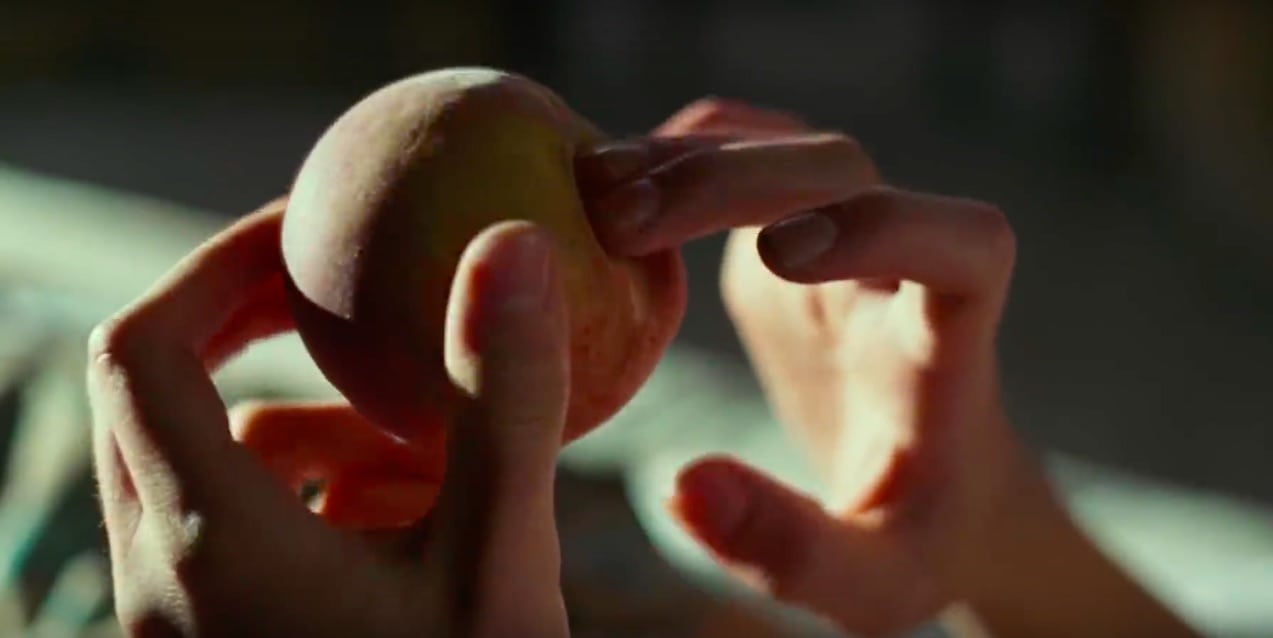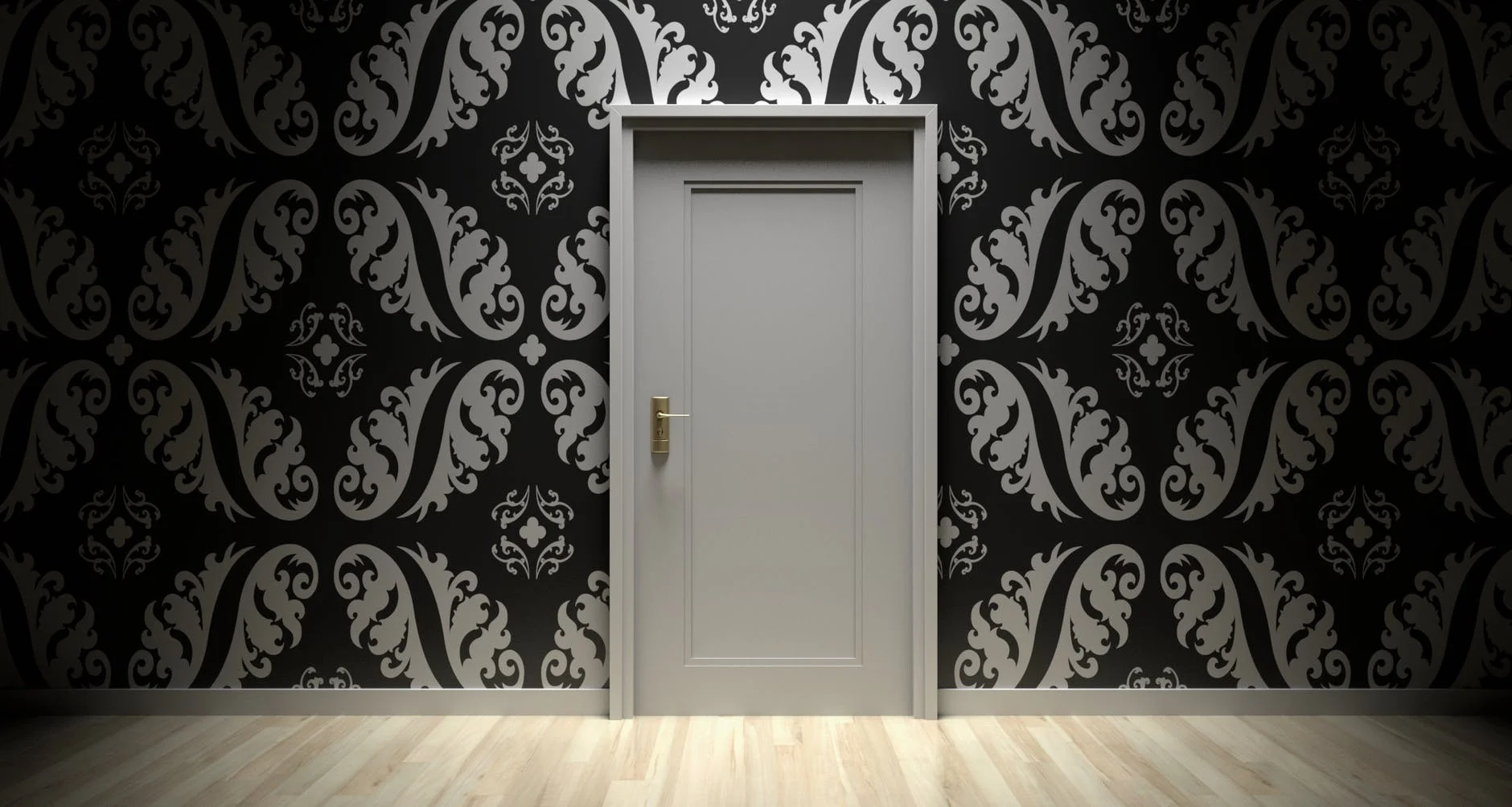[Pride 2019] “Where’s the dick in my horror?!”: Thoughts on Queer Spectatorship and Desire in Horror
Sometimes I think back to a seminal moment in my horror fandom: as a closeted high schooler who stubbornly refused to accept who I truly was, I remember reading about an imported UK television series in TV guide magazine. It was screening on Showcase Channel, a Canadian channel that screened principally art cinema, foreign films and second run American television shows and movies. Unofficially Showcase had a reputation (among ill-informed teenagers such as myself) for airing soft-core porn, particularly in the late night timeslots on the weekends. In hindsight that “soft-core porn” was actually just (foreign) films that treated sex and nudity as a natural part of their narratives. I’m talking about the works of established cinematic greats like Fassbender, Almodovar, Breillat, Lynch and – hilariously enough – Canada’s very own acclaimed director: Cronenberg and Egoyan.
The television import in question was the original Queer as Folk by Russell Davies, an incredibly popular series about a cadre of gay friends living and occasionally dying in London, UK. The TV Guide write-up made it clear that the series was clever, entertaining and, most notably, intended for “Mature Audiences” due to its sexual frankness. As a budding homo, I remember thinking that it was my duty to watch this acclaimed series. Not even my agonizing internalized homophobia could suppress my desire, especially when there was a chance that I might see some man-on-man action! (Ah the pre-Internet days when it felt like a goddamn scavenger hunt to track down dick)
Sidebar: Years later I tracked down Queer as Folk and while it is a great series and has some refreshingly honest things to say about queer life, I realize that in hindsight my teenage self was less interested in the entertainment value of the series than its potential as masturbatory fodder (shocking, I know). I can only envision my younger self desperately fast forwarding through the talky sections to get to the sexy bits.
The rest of the story - about how my mother got wind of my plans and headed me off at the pass, and how I inadvertently got my revenge on her when we later watched Cronenberg’s Crash together – are unimportant for the purposes of this piece. What’s worth highlighting instead is how, even at an early age and despite being thoroughly buried in the closet, I unintentionally associated gay content with sex and nudity.
Fast forward to adulthood and all of the agency that comes with it. Living as an adult in the 21st century with a stable Internet connection, I now have easy access to literally any kind of sexual content that I could possibly want. And yet…nearly every discussion I have with gay friends about gay cinema inevitably comes down to an analysis of the fuckability of the actors, the nudity and the sex (or lack thereof).
It’s petty and it’s juvenile; hell, sometimes it’s even a little bit sad and pathetic. But the truth is when my queer friends and I see gay films, there is a set of implicit expectations. The film will include sex and nudity, but (and this is paramount) not be exclusively defined by it, lest the film be seen as pandering exclusively to lustful audiences. It’s a tightrope, no-win situation and one that is infrequently vocalized except outside of casual conversation…and yet it comes up each and every time I discuss a queer film with friends. I can’t count the number of times I heard a derivation of “I liked that movie where he fucked the peach, but why didn’t Armie Hammer show his dick?” or “That movie was filled with eye candy and nudity, but it had no plot. If I just wanted to get off, I would have watched porn.”
In essence, queer audiences want the dick, but only when it is presented in the right way/context. And the “right” way is liminal and always changing. It is different for each individual and seems to operate on a sliding scale based on the age of the characters and actors, the type of narrative, the age of the film, its country of origin and any other number of fluid characteristics.
What can I say? We’re a fickle bunch of demanding queens.
So how does the introduction of genre inform or change this discussion?
I remember going to see Paul Etheredge’s Hellbent (2004) at a LGBTQ+ film festival and listening to a diverse range of opinions and criticisms about the self-proclaimed “first gay slasher” afterwards. The film follows a group of four attractive, white gay men (all straight actors) who are stalked and killed by a muscly killer in a red devil mask over one Halloween night in Los Angeles.
There is innuendo aplenty, and a few of the four show some PG-rated skin, but there’s very little that could be considered graphic or controversial. The sexuality, in particular, is quite chaste. There is a suggested threesome featuring Andrew Levitas’ bisexual Chaz and, in the climax, protagonist Eddie (Dylan Fergus) attempts to hook up with tough, motorcycle-riding Jake (Bryan Kirkwood), but they are interrupted by the killer. All in all, Hellbent is less gratuitous than your average 80s slasher.
My Hellbent viewing party consisted of three or four gay men with varying reactions. One guy was mostly happy with the casting because - aside from Joey (Hank Harris) - the men were all “handsome and well-built.” Another disagreed, describing them as cookie-cutter, generic and “too Hollywood.” A third suggested that there was not enough nudity, complaining that the most attractive of the bunch, Tobey (Matt Phillips), was made to seem less hot because he was in drag the whole film. Finally, we all lamented that the climactic sex scene was thwarted, as though our carnal desires for man flesh were unceremoniously cut short so that the killer could get his (never mind that this is the literal joke Etheredge is making).
In retrospect, nearly all of these reactions, including my own, have less to do with the actual quality of the film and far more to do with our expectations and desires – unfulfilled or otherwise. As a queer text consumed by queer audiences (breeders be damned!), we felt owed a certain amount of nudity and sex to go along with our appetite for blood and gore.
In my time writing about horror films, I’ve regularly encountered this same rhetoric, albeit from (presumably) heterosexual male viewers who feel that nudity and horror films go hand in hand. I have regularly been attacked in the comments section for questioning the amount of gratuitous nudity in horror films and while I know that the Internet - and more specifically comment sections - are a breeding ground for uninformed arguments and trollish behaviour, I can’t help but notice the number of horror fans for whom nudity, sex and horror are inextricably linked. In their eyes where one is found, the others surely can’t be far behind.
So am I a hypocrite for raising the red flag about issues of gratuitous female nudity in my writing when I (not so secretly) covet male flesh in my own personal horror viewing habits?
Probably. But here’s the conceit: I can objectively recognize that I am a moron. I will happily cop to the fact that I appreciate male nudity and sex when I watch horror, especially queer horror; I applaud filmmakers who make an effort to both terrify and turn me on. If/when bouncing pecs, bubble butts and boners do pop up, it’s certainly a thrill to my inner teenager; a years in the making pay-off for lying to my mother about the Showcase fiasco. It’s inherently juvenile, but there’s an illicit thrill in that.
I don’t need to have sex and nudity in horror films, nor do I think that as a queer viewer I am owed them. Will I dress down a queer (horror) film for not providing these elements? Sure…but only in the most facile, surface-level fashion. If there is nudity or sex, my number one argument is always that it be plot or character motivated (which tends not to be the case when it comes to gratuitous female nudity and where the trolls tend to be the most irate).
Amusingly the taboos and the cultural barriers slowly seem to be deteriorating. These days there is an increasing amount of plot and character-driven queer male sexuality showing up in horror. Yes, it is still mostly in foreign, artsy horror films such as Stranger by the Lake / L’icconu du lac (Giuraudie, 2013) and Knife + Heart / Un couteau dans le coeur (Gonzalez, 2018), but the dong revolution is happening.
I can only imagine how my closeted teenage self would feel knowing that there was a bright and dick-filled queer horror cinema waiting for him in the future. Perhaps he would have looked at the Queer as Folk incident in more happy and contented fashion…
…probably not though. I just really wanted to see Aiden Gillen and Charlie Hunnam get it on. Ah youth!
Joe is a TV addict with a background in Film Studies. He writes for Bloody Disgusting, Anatomy of a Scream, Grim Magazine, The Spool, That Shelf and occasionally his own site. He also cohosts two very different podcasts: Horror Queers with fellow Bloody writer Trace Thurman and Hazel & Katniss & Harry & Starr, a YA adaptation podcast, with Brenna Clarke Gray.
You should follow him on Twitter and Instagram.


![[Pride 2019] “Where’s the dick in my horror?!”: Thoughts on Queer Spectatorship and Desire in Horror](https://images.squarespace-cdn.com/content/v1/5b39608d75f9eef54c62c3f0/1558935308247-WRJM5QWQOIPH3IBE5ENJ/Hellbent-Pic-1.jpg)




![[Pride 2021] An Ode to the Bodies that Lifted Me Up: 'Queer' Muscularity in Pop Culture](https://images.squarespace-cdn.com/content/v1/5b39608d75f9eef54c62c3f0/1622928217981-TPF2YFDN8FHIZ34L9Y57/clean.jpg)
![[Pride 2019] Tethered to the Closet](https://images.squarespace-cdn.com/content/v1/5b39608d75f9eef54c62c3f0/1560985069673-1LGBOSFI1WH4KFFN4NFV/mv5bztlinwjhm2ytndc1mc00ytk1lwe2mgytzme4m2y5oddlnzqzxkeyxkfqcgdeqxvymzy0mte3nzu40._v1_.jpg)
![[Pride 2019] Blood, Boys and Blowjobs: Revisiting 2004's Gay Slasher, Hellbent](https://images.squarespace-cdn.com/content/v1/5b39608d75f9eef54c62c3f0/1561677413349-Z8GQF3LFPP2MCPCWDIUP/tyertyretyer.jpg)
![[Pride 2019 Short Story] The Lighthouse](https://images.squarespace-cdn.com/content/v1/5b39608d75f9eef54c62c3f0/1560976351288-0HHZ6O2JR0HUSSCFQX1Q/pexels-photo-722664.jpeg)
![[Pride 2019] Horror, Fear & Identity](https://images.squarespace-cdn.com/content/v1/5b39608d75f9eef54c62c3f0/1560974283767-URCVH49ICXSUYBFM41EC/1253258.jpg)
![[Pride 2019] THE BOYS NEXT DOOR: The Homoeroticism of Fright Night and how it saved my life](https://images.squarespace-cdn.com/content/v1/5b39608d75f9eef54c62c3f0/1560968195855-AJ11PZT1NPP0A15IW2MF/fright-night-gay.png)
![[Pride 2019] The Lesbian Villain](https://images.squarespace-cdn.com/content/v1/5b39608d75f9eef54c62c3f0/1560979479014-K1CGGIB1HGL6M5XQQ8JH/asdffsdfgsdghdfghhjj.jpg)
![[Pride 2019] The Final Girl: A LGBTQ+ Representation](https://images.squarespace-cdn.com/content/v1/5b39608d75f9eef54c62c3f0/1560978597649-KMGZYFA5I02ZOMT9Q3VF/8ea179785b1649cdeefb0eb077c1bd32.jpg)
![[Pride 2019] Normalizing Queerness through Vampirism](https://images.squarespace-cdn.com/content/v1/5b39608d75f9eef54c62c3f0/1560977810654-H9UDEGT2J1L0RUV6KIJX/werwertwertwertw.jpg)
![[Pride 2019] Injecting Queer Femme Rage into "Audition"](https://images.squarespace-cdn.com/content/v1/5b39608d75f9eef54c62c3f0/1560979929151-RVBW26DNCHR5TBXC21BK/audition-1108x0-c-default.jpg)
![[Pride 2019 Short Story] Deer Wife](https://images.squarespace-cdn.com/content/v1/5b39608d75f9eef54c62c3f0/1560975199628-JF11Z4SHT75XB1A4L7DU/pexels-photo-2302802.jpeg)
![[Pride 2019] I Don't Watch Horror Movies](https://images.squarespace-cdn.com/content/v1/5b39608d75f9eef54c62c3f0/1560630982974-O3ZCRGEFNR2JOEF6N011/tKEHoKPZv3af0Pn3poaOLHOJ6NM-0.jpg)
![[Pride 2019 Short Story] Such Nice Guys](https://images.squarespace-cdn.com/content/v1/5b39608d75f9eef54c62c3f0/1560973260982-RMED56MMBWXYO52VD9Y5/pexels-photo-408517.jpeg)
![[Pride 2019] “Reclamations of Ourselves”: Ritual, Horror, and the Erotic in the work of Audre’s Revenge and Monika Estrella Negra](https://images.squarespace-cdn.com/content/v1/5b39608d75f9eef54c62c3f0/1560972375295-YKD2V1JBSYZLSXRT17IJ/dsfghsdghdsg.jpg)
![[Pride 2019] Is Jennifer’s Body the Bisexual Horror Film We Never Knew We Needed?](https://images.squarespace-cdn.com/content/v1/5b39608d75f9eef54c62c3f0/1560967347423-2I74925P8ETSI0BT7I81/jennifers-body-poster.jpg)
![[Pride 2019] Why Horror?](https://images.squarespace-cdn.com/content/v1/5b39608d75f9eef54c62c3f0/1560632665620-2J7FFX40WJU2LDRTZAJR/LATENTIMAGE6.png)
![[Pride 2019] Villainizing Queerness in Alexandre Aja’s High Tension](https://images.squarespace-cdn.com/content/v1/5b39608d75f9eef54c62c3f0/1560631689481-PWYN80K2HYST4CYIO5V6/MARIE_%2528HAUTE_TENSION%2529.jpg)
![[Pride 2019] Horror Did Not Save My Life](https://images.squarespace-cdn.com/content/v1/5b39608d75f9eef54c62c3f0/1560631362747-54XOE0TBGJXGOB8UOX8P/KE64oaAn.jpg+large.jpg)
![[Pride 2019] 18 & Gay](https://images.squarespace-cdn.com/content/v1/5b39608d75f9eef54c62c3f0/1560634045789-OSQ1W5ZSKQSGKPVAJXYW/XR11F0fT.jpg+large.jpg)
![[Pride 2019] How Horror is My Coping Mechanism](https://images.squarespace-cdn.com/content/v1/5b39608d75f9eef54c62c3f0/1560629268953-K08L1OLGI2ICS3WAI62V/F1pmQFht.jpg+large.jpg)

![[Pride 2019] Do You Sleep?](https://images.squarespace-cdn.com/content/v1/5b39608d75f9eef54c62c3f0/1558986875527-Q37PJSRVFPBZHMOFJBRW/i-like-when-measdfasdfasdfn-are-direct.jpeg)
![[Pride 2019] Embracing My Nature: Hannibal and My Gay Awakening](https://images.squarespace-cdn.com/content/v1/5b39608d75f9eef54c62c3f0/1560382782983-NN9RA658WTZFPQEK4DMR/f175ffff4188695dfbde6276a3c13244.jpg)
![[Pride 2019] How Sailor Moon Taught Me It's OK to be Queer](https://images.squarespace-cdn.com/content/v1/5b39608d75f9eef54c62c3f0/1560298136905-6NXB1NB337UZRR84MVCL/1.PNG)
![[Pride 2019] Don Mancini's Queer Inclusion](https://images.squarespace-cdn.com/content/v1/5b39608d75f9eef54c62c3f0/1558992991942-1EFIALF6MR98YNGQJ61J/Glenorglenda-e1497479115890.jpg)
![[Pride 2019] Two Angels: The Mutant Body in X-Men: The Last Stand and X-Men: Days of Future Past](https://images.squarespace-cdn.com/content/v1/5b39608d75f9eef54c62c3f0/1560028480927-8VUZWP0O88SMK2TQTC3H/thumbnailImage.jpg)
![[Pride 2019 Short Story] A Bright and Bloody Becoming](https://images.squarespace-cdn.com/content/v1/5b39608d75f9eef54c62c3f0/1559090164312-FSVRI54ZX9ZUE7R9JC7Z/image1.jpeg)
![[Pride 2019] Fright Night and The Sexual Awakening of a Queer Woman](https://images.squarespace-cdn.com/content/v1/5b39608d75f9eef54c62c3f0/1559089258501-QQA99TSCU2BZVZFZUXLM/Jerry_Original.jpg)
![[Pride 2019] I'm Gay for Horror](https://images.squarespace-cdn.com/content/v1/5b39608d75f9eef54c62c3f0/1558991573629-UHWUVOMEKTH56IJ11XAS/the-changeling-1980-film-05ae6968-0ee6-4bb0-aa87-5e652d659be-resize-750.jpg)
![[Pride 2019] Shove it Down Their Throats - Why Queer Representation in the Media Matters](https://images.squarespace-cdn.com/content/v1/5b39608d75f9eef54c62c3f0/1559174314440-CBX4DFLCMWIVJGUWLIBO/91ziuphsECL._SY679_.jpg)